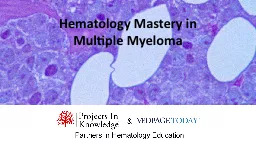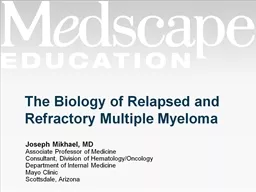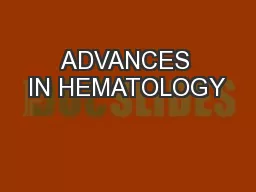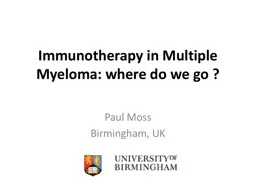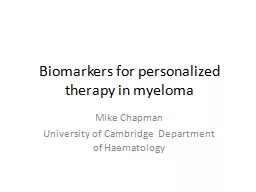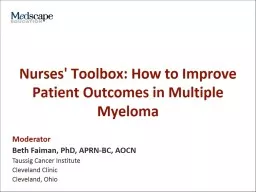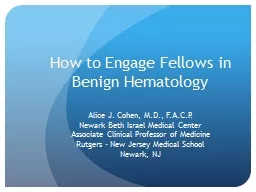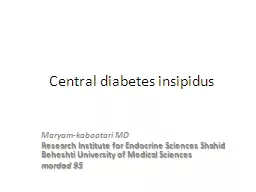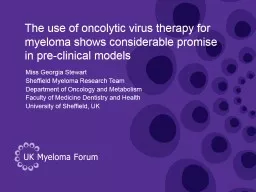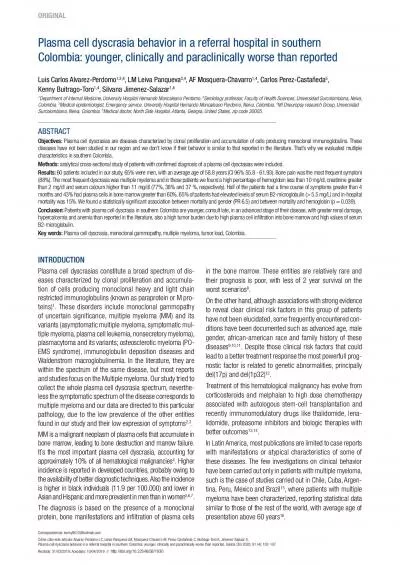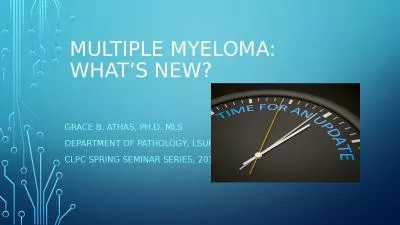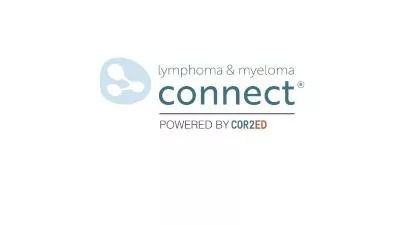PPT-Hematology Mastery in Multiple Myeloma
Author : frostedikea | Published Date : 2020-07-02
Part I Smoldering Multiple Myeloma and Induction Therapy for Patients with Newly Diagnosed Multiple Myeloma Moderator Sagar Lonial MD Panelists Jonathan Kaufman
Presentation Embed Code
Download Presentation
Download Presentation The PPT/PDF document "Hematology Mastery in Multiple Myeloma" is the property of its rightful owner. Permission is granted to download and print the materials on this website for personal, non-commercial use only, and to display it on your personal computer provided you do not modify the materials and that you retain all copyright notices contained in the materials. By downloading content from our website, you accept the terms of this agreement.
Hematology Mastery in Multiple Myeloma: Transcript
Download Rules Of Document
"Hematology Mastery in Multiple Myeloma"The content belongs to its owner. You may download and print it for personal use, without modification, and keep all copyright notices. By downloading, you agree to these terms.
Related Documents

